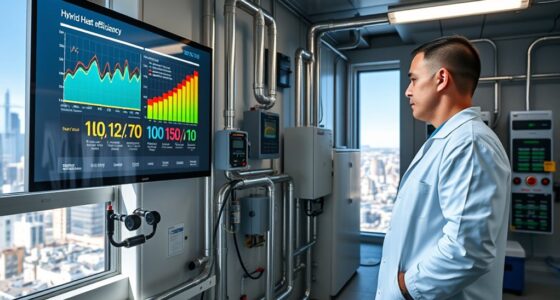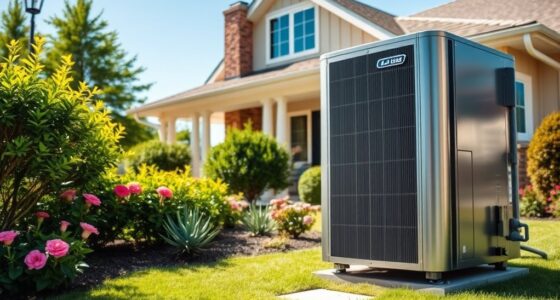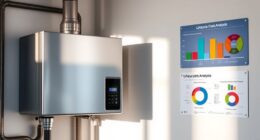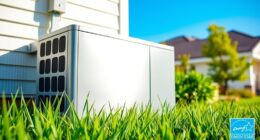Tired of your energy costs skyrocketing? We have a great solution for you. In this article, we will demonstrate how to determine the energy savings achieved by utilizing a heat pump.
By understanding heat pump efficiency ratings and evaluating your current heating and cooling costs, you can determine the potential energy savings with a heat pump.
We’ll show you how to calculate the return on investment and provide tips for maximizing energy efficiency. Get ready to master the art of saving energy with a heat pump.
Key Takeaways
- Heat pump efficiency ratings, such as SEER and HSPF, measure the ratio of heat output to energy input.
- Analyzing utility bills and comparing current costs with the cost of operating a heat pump can help determine potential energy savings.
- Factors such as insulation levels, climate conditions, and space size impact the energy savings potential of a heat pump.
- Exploring cost-effective alternatives, such as programmable thermostats, insulation, Energy Star appliances, and LED lighting, can result in significant energy and cost savings.
Understanding Heat Pump Efficiency Ratings
We love learning about heat pump efficiency ratings because they help us understand how efficiently our heat pumps are operating. Heat pump efficiency ratings are determined by industry standards that measure the ratio of heat output to energy input.
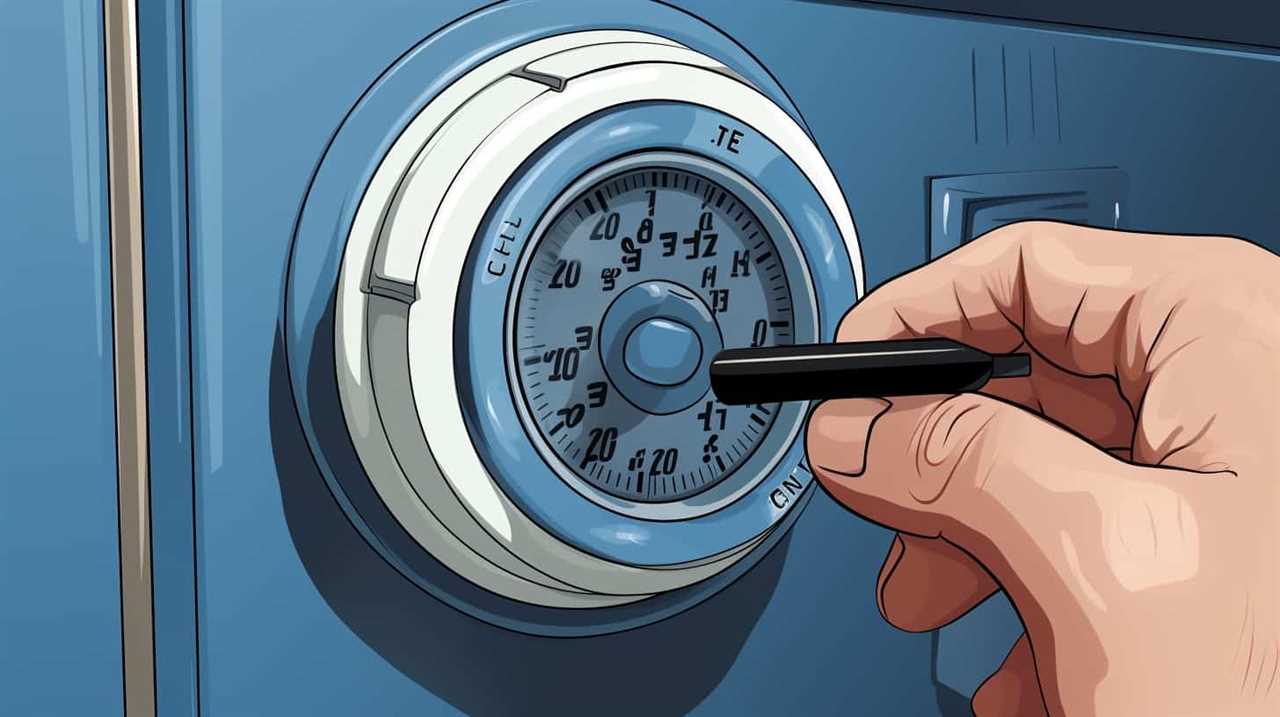
These standards ensure that consumers can compare the efficiency of different heat pump models accurately. The most common rating system for heat pumps is the Seasonal Energy Efficiency Ratio (SEER) for cooling and the Heating Seasonal Performance Factor (HSPF) for heating. SEER measures the cooling efficiency of a heat pump, while HSPF measures its heating efficiency.
Evaluating Your Current Heating and Cooling Costs
Let’s start by assessing our current heating and cooling costs to determine the potential savings with a heat pump.
To evaluate our energy consumption, we need to analyze our utility bills. Begin by identifying the energy usage for heating and cooling separately. Look for patterns and trends over the past year, taking into account seasonal variations. Calculate the average monthly cost for heating and cooling.
Next, compare this with the cost of operating a heat pump. Consider factors such as the efficiency rating of the heat pump and the local electricity rates.

Determining Energy Savings Potential With a Heat Pump
When determining the energy savings potential with a heat pump, there are several factors that need to be taken into account.
These factors include the energy efficiency of the heat pump itself, the climate and weather conditions of the area, as well as the size and insulation of the space being heated or cooled.
Additionally, it’s important to consider cost-effective alternatives to heat pumps, such as energy-efficient HVAC systems or insulation upgrades, which may provide similar or even greater energy savings.
Factors Affecting Savings
One of the key factors in determining our potential energy savings with a heat pump is by considering the insulation levels both in and around our home. Proper insulation plays a crucial role in reducing energy consumption by minimizing heat loss during colder months and preventing heat gain during warmer months.

Additionally, climate variations have a significant impact on the energy efficiency of heat pumps. In colder climates, where temperatures drop significantly, heat pumps may consume more energy to maintain a comfortable indoor temperature. On the other hand, in milder climates, heat pumps can operate more efficiently, resulting in greater energy savings.
Cost-Effective Alternatives
We can explore cost-effective alternatives to determine our potential energy savings with a heat pump. By considering energy efficient options, we can not only reduce our carbon footprint but also achieve long term savings on our utility bills. Here is a table showcasing some popular cost-effective alternatives and their potential energy savings:
| Alternative | Energy Efficiency | Long Term Savings |
|---|---|---|
| Programmable Thermostat | Can save up to 10% on heating and cooling costs | Significant savings over time by optimizing temperature settings |
| Insulation | Reduces heat transfer, resulting in lower energy consumption | Up to 30% reduction in heating and cooling costs |
| Energy Star Appliances | Utilize advanced technology to reduce energy consumption | Up to 50% less energy usage compared to non-certified appliances |
| LED Lighting | Highly energy efficient, consuming up to 75% less energy | Substantial savings on electricity bills |
Calculating the Return on Investment for a Heat Pump
When considering the return on investment (ROI) for a heat pump, there are several key points to consider.
First, we need to assess the cost of the heat pump installation and compare it to the potential energy savings. This analysis allows us to estimate the payback period, which is the time it takes for the energy savings to offset the initial investment.
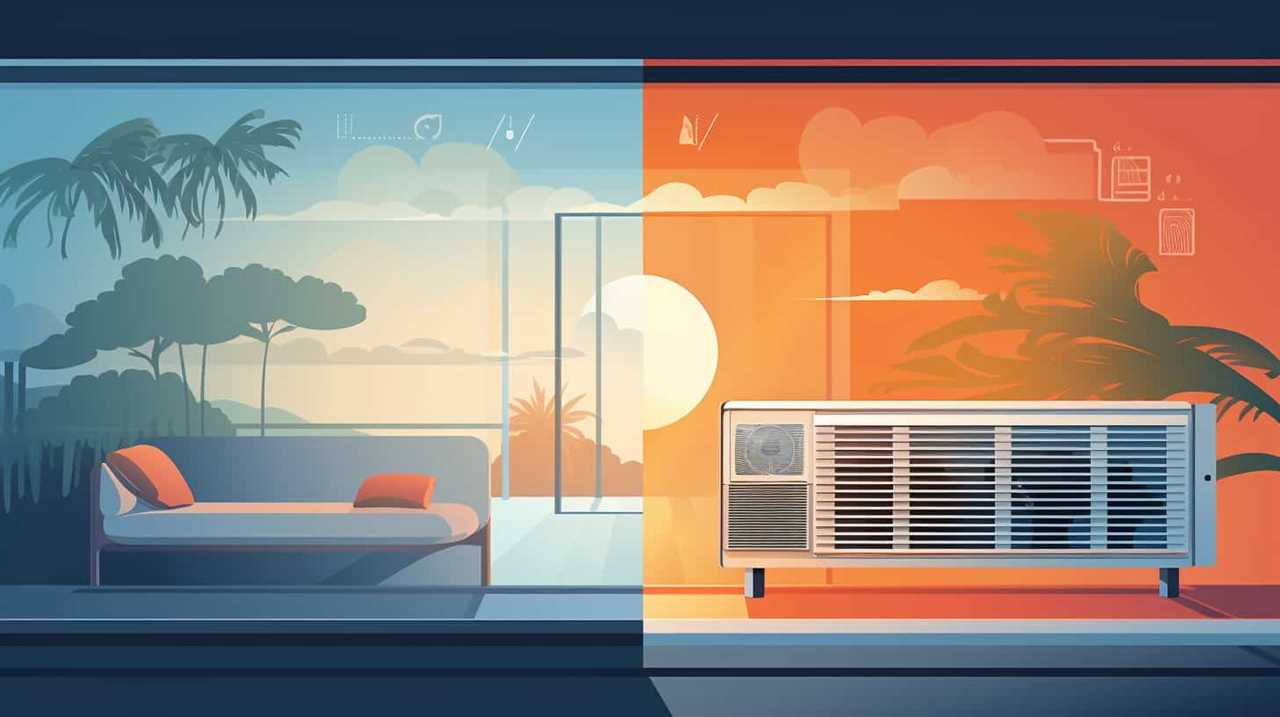
Cost Vs Savings
Calculating the return on investment for a heat pump can be a complex process, but it’s crucial to weigh the cost against potential savings. To conduct a proper cost analysis, it’s important to consider the following:
Initial Investment: Determine the cost of purchasing and installing the heat pump, including any additional equipment or modifications required.
Energy Consumption: Analyze the energy consumption of the heat pump compared to other heating systems, such as a furnace or electric heaters. Consider factors like the heat pump’s efficiency, climate conditions, and the size of the space it needs to heat.
Potential Savings: Calculate the potential savings in energy costs over the lifespan of the heat pump. Consider factors like energy prices, expected lifespan of the heat pump, and any available incentives or rebates.
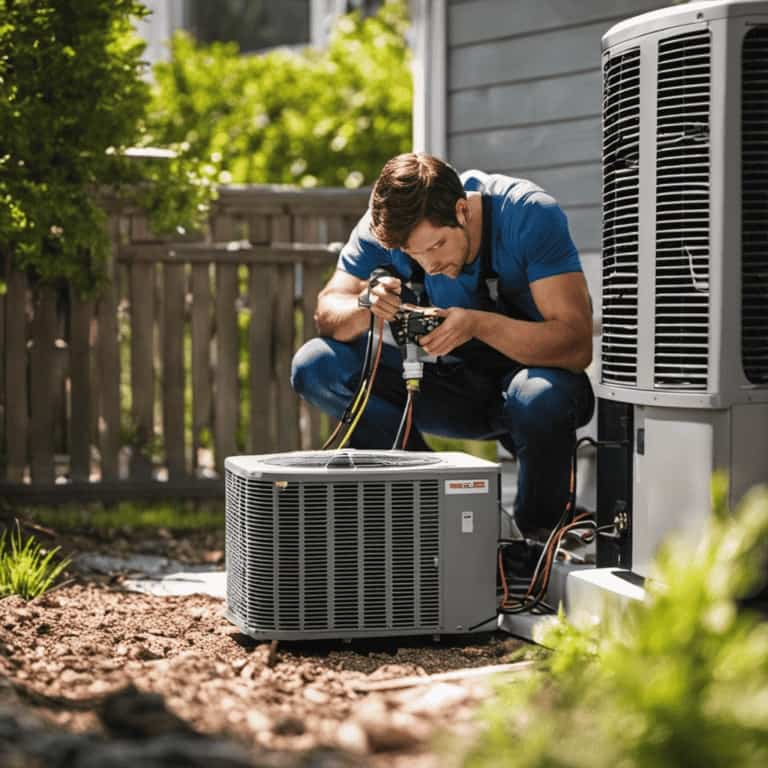
Payback Period Estimation
To estimate the payback period for a heat pump, we need to consider factors such as the initial investment, energy savings, and potential incentives or rebates. Payback period analysis involves calculating the time it takes for the energy savings to recoup the initial investment. This estimation is crucial in determining the return on investment for a heat pump.
To begin the analysis, we need to gather data on the initial cost of the heat pump installation, including any additional expenses such as ductwork modifications or electrical upgrades. Next, we estimate the potential energy savings that the heat pump will provide compared to the previous heating and cooling system. This can be done by analyzing historical energy bills or using energy modeling software.
Once we have these figures, we can calculate the payback period by dividing the initial investment by the annual energy savings. For example, if the heat pump installation cost is $10,000 and the annual energy savings are $1,500, the payback period would be approximately 6.7 years.
It is important to note that payback period estimations can vary depending on factors such as climate, energy prices, and usage patterns. Additionally, potential incentives or rebates offered by utilities or government programs can significantly reduce the payback period, making the investment in a heat pump more financially attractive.
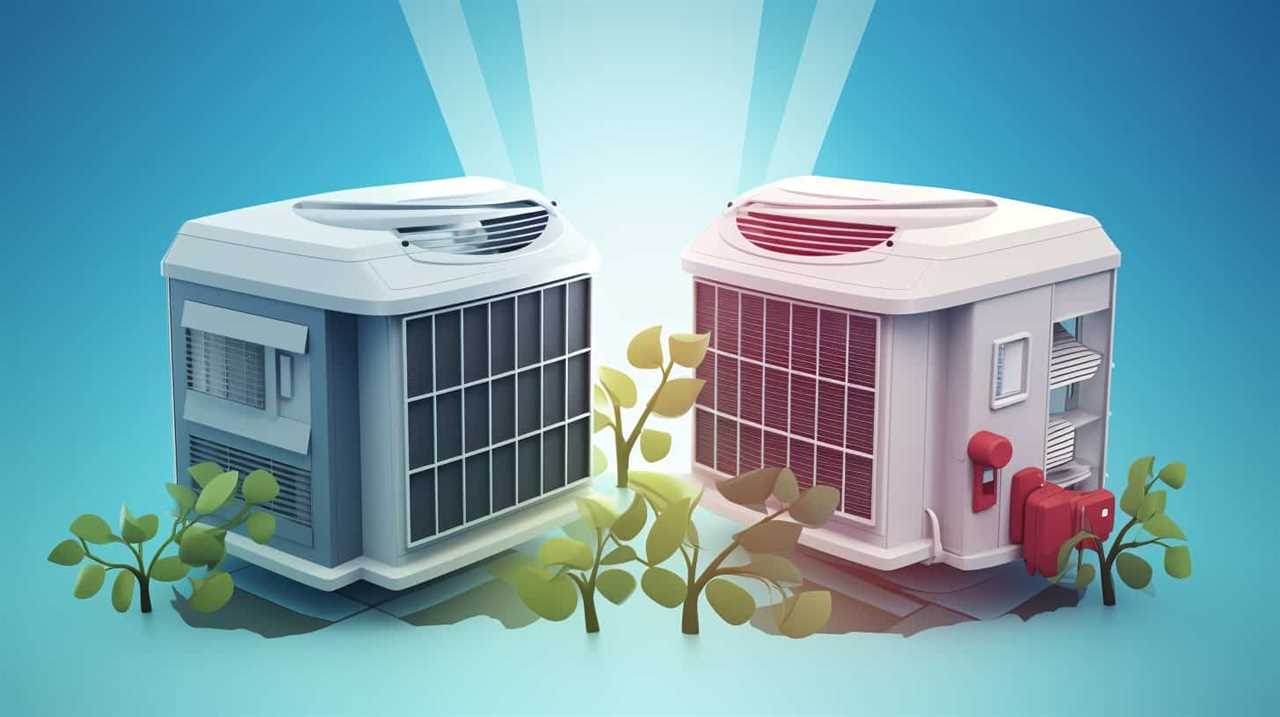
Factors Affecting Roi?
One of the key factors that affect our return on investment for a heat pump is the duration of our expected ownership.
There are several factors influencing payback and determining energy efficiency that should be taken into consideration. These factors include:
Efficiency of the heat pump: A higher efficiency heat pump will result in lower energy consumption and therefore a faster return on investment. It’s important to choose a heat pump with a high seasonal energy efficiency ratio (SEER) and heating seasonal performance factor (HSPF) to maximize energy savings.
Climate and weather conditions: The climate in which the heat pump operates can significantly impact its efficiency and energy savings. In colder climates, heat pumps may have to work harder to extract heat from the air, leading to increased energy consumption.

Energy prices: The cost of energy in your area will directly affect the payback period of your heat pump. Higher energy prices will result in faster savings and a shorter payback period.
Considering these factors, it’s essential to carefully evaluate the expected return on investment for a heat pump. By understanding the factors influencing payback and determining energy efficiency, we can make informed decisions about the best heat pump for our needs.
Now, let’s delve into the subsequent section about factors affecting heat pump energy savings.
Factors Affecting Heat Pump Energy Savings
We can identify several key factors that directly impact heat pump energy savings.

The first factor is the quality of heat pump installation. A properly installed heat pump will operate efficiently and effectively, maximizing energy savings. On the other hand, a poorly installed heat pump can result in energy wastage and decreased efficiency.
The second factor is the use of energy-efficient upgrades. Upgrading your heat pump with energy-efficient features such as variable-speed motors, smart thermostats, and improved insulation can significantly enhance energy savings. These upgrades optimize the performance of the heat pump and reduce energy consumption.
Additionally, the size and capacity of the heat pump in relation to the space it’s heating or cooling also affect energy savings. A properly sized heat pump will provide optimal comfort while minimizing energy usage.
Lastly, climate plays a role in heat pump energy savings. Heat pumps are more efficient in moderate climates, as extreme temperatures can reduce their performance and efficiency.
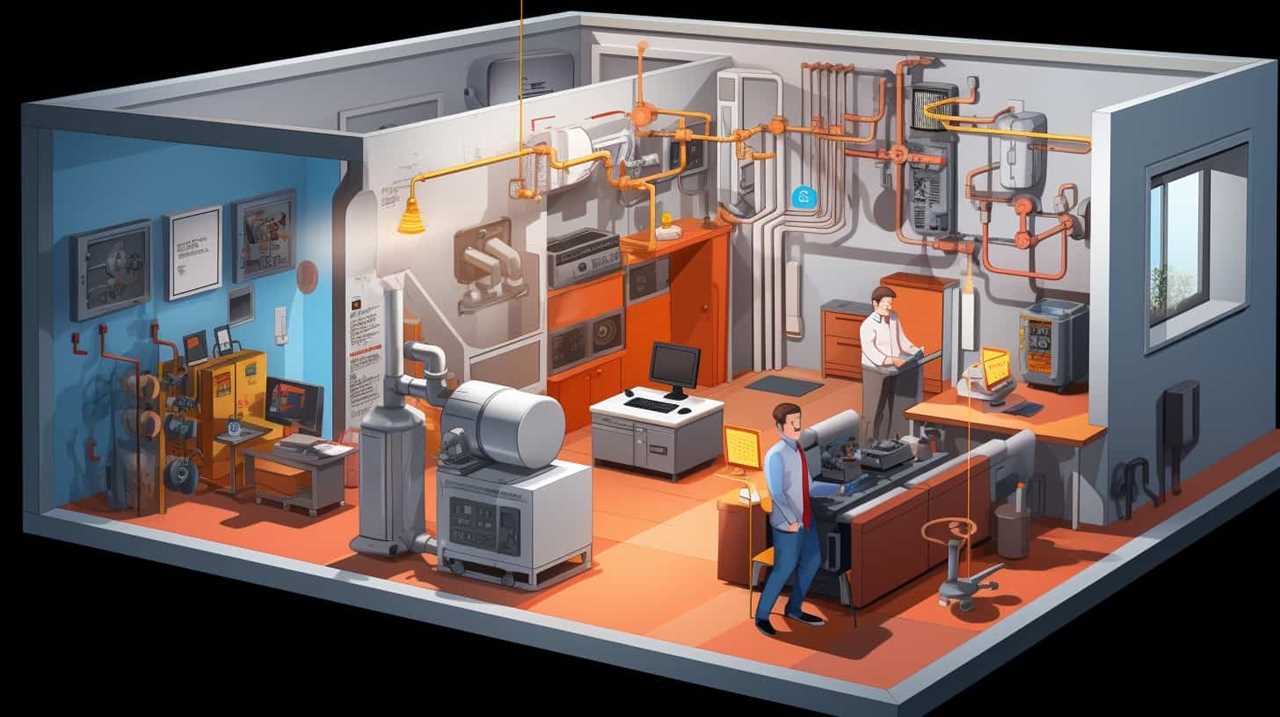
Tips for Maximizing Energy Efficiency With a Heat Pump
By implementing these simple tips, we can ensure that our heat pump operates at maximum energy efficiency. Here are three energy saving strategies to maximize performance:
Regular maintenance: Schedule professional maintenance for your heat pump at least once a year. This will ensure that the system is running at its peak efficiency, with clean filters, calibrated thermostats, and proper refrigerant levels.
Optimal thermostat settings: Set your thermostat to the most energy-efficient temperature settings. During the winter, aim for 68°F (20°C) when you’re home and lower when you’re away. In the summer, keep it at 78°F (25°C) or higher. Consider investing in a programmable thermostat to automate these adjustments.
Proper insulation: Insulate your home properly to minimize heat loss in the winter and heat gain in the summer. Seal any air leaks, add insulation to walls and attics, and ensure that windows and doors are properly sealed.
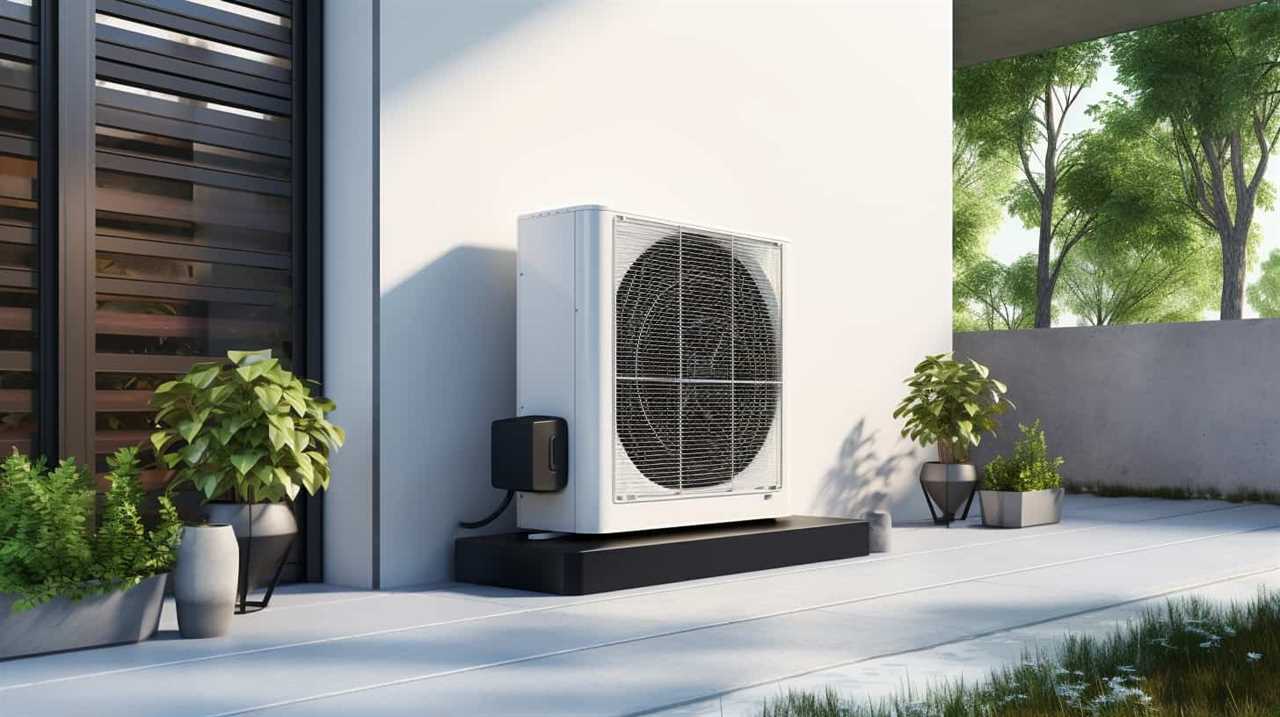
Frequently Asked Questions
What Is the Average Lifespan of a Heat Pump?
The average lifespan of a heat pump depends on various factors such as maintenance frequency. It is important to regularly maintain the heat pump to extend its lifespan and ensure optimal performance.
Can a Heat Pump Be Used for Both Heating and Cooling Purposes?
Certainly! A heat pump can indeed be used for both heating and cooling purposes. It offers high heat pump efficiency, making it an advantageous choice for those seeking to optimize energy savings and maintain a comfortable indoor climate.
Are There Any Government Incentives or Rebates Available for Installing a Heat Pump?
There are various government incentives and rebates available for installing a heat pump. These incentives aim to promote energy efficiency and reduce the overall carbon footprint. They can significantly offset the cost of installation.
How Often Should a Heat Pump Be Serviced or Maintained?
Regular heat pump service is crucial to maintain optimal performance and extend its lifespan. The frequency of heat pump maintenance depends on factors like usage and climate. We recommend scheduling professional service annually to ensure peak efficiency and prevent costly breakdowns.
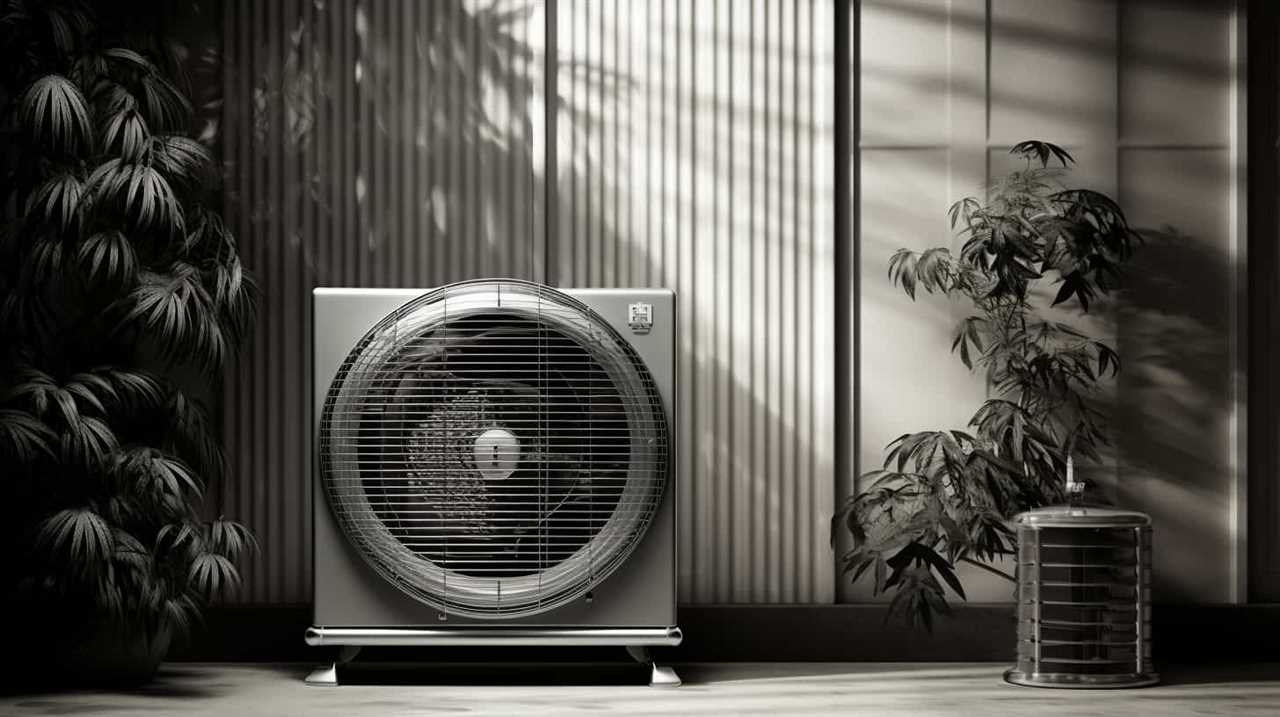
What Is the Difference Between a Single-Stage and a Two-Stage Heat Pump?
Single stage heat pumps and two stage heat pumps differ in their energy efficiency. Understanding the distinction between the two is crucial for achieving mastery in the field of heat pump technology.
What Is the Formula Used in a Heat Pump Energy Savings Calculator?
The formula used in a heat pump energy savings calculator takes into account factors like the initial cost of the heat pump, the energy efficiency rating, and the electricity rates. By plugging in these values, the calculator can estimate potential savings over a specific period of time.
Conclusion
In conclusion, calculating heat pump energy savings requires understanding efficiency ratings, evaluating current heating and cooling costs, and considering potential return on investment. Factors such as insulation, climate, and thermostat settings also play a role in determining energy savings.
For example, a case study showed that installing a heat pump reduced energy consumption by 30% in a home located in a cold climate, resulting in significant cost savings over time.
By maximizing energy efficiency with a heat pump, homeowners can enjoy both environmental and financial benefits.




